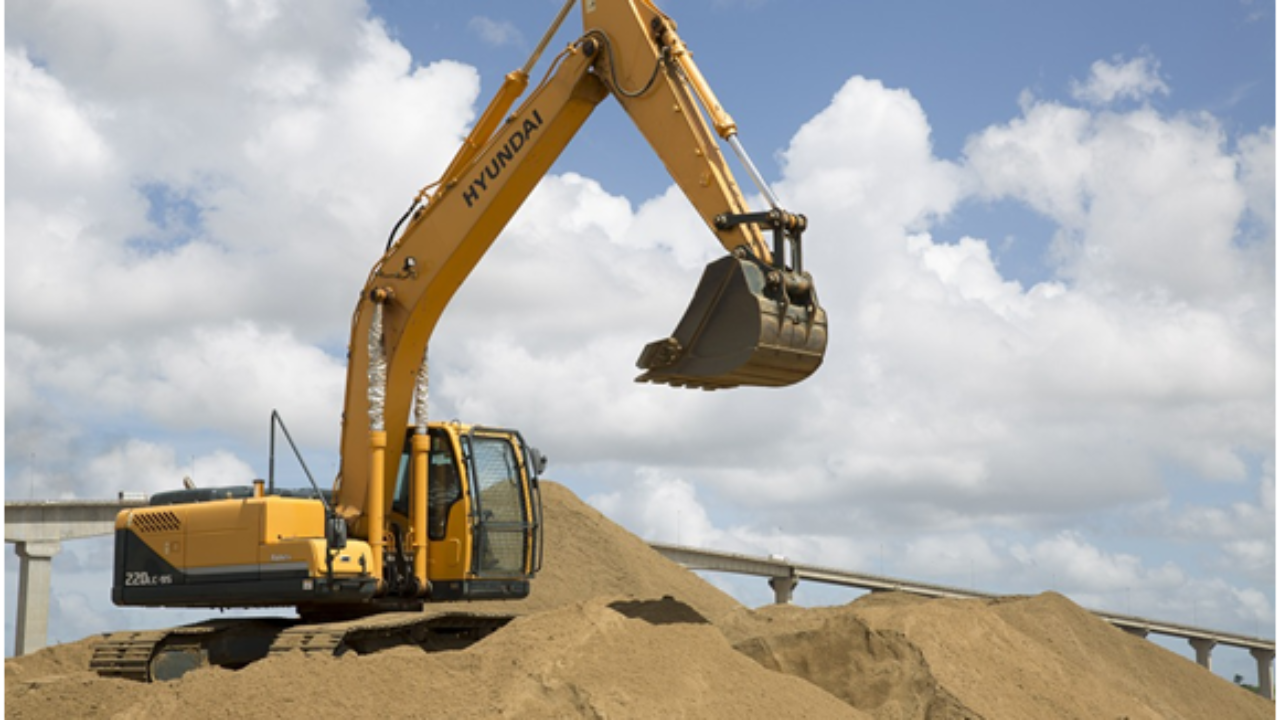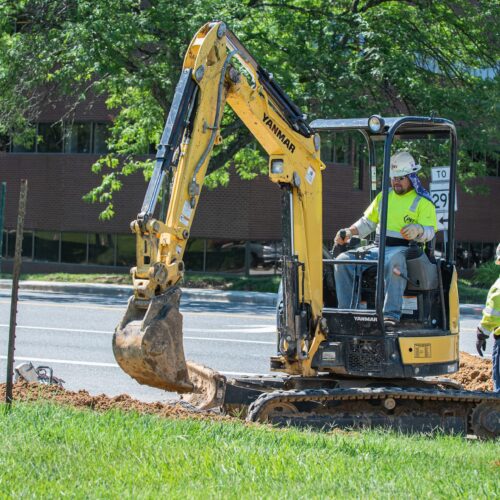How Excavation Contractors Near Me can Save You Time, Stress, and Money.
Wiki Article
The Ultimate Guide To Mini Excavator
Table of ContentsThe Best Strategy To Use For Mini ExcavatorAn Unbiased View of Mini ExcavatorThe smart Trick of Excavation Companies That Nobody is DiscussingThe Best Guide To Excavation CompaniesThe Single Strategy To Use For Trencher


Scrapers or Pans excavate soil in one place, haul as well as unload the soil in another spot (trencher). It is tough to match the effectiveness of scrapes for cut/fill dirt operation if the haul distance is less then a mile. Scrapes are usually drawn by a rubber tire wheel tractor and also are occasionally pressed via the cut location by an excavator.
There are lot of times that scrapers are not utilized for site grading and a dump vehicle is used: the haul might be to long, the haul may go across roads where scrapers are not permitted, hard rock might be encountered, equipment availability, and so on. Unload vehicles are in typical use and possibly call for little discussion.
Numerous trucks have a top-hinged tailgate that can not dump any rock bigger after that the tailgate width. "Rock body" beds, on the various other hand, have no tailgates and also can discard any type of size rock, although their quantity capacity is diminished. These internet links show equipment requirements for a number of common dump vehicles. Compaction Devices increases the density of the soil and in many cases supplies a smooth, rolled surface.
The 10-Second Trick For Grading Contractors
From an easy examination pit to percussion exploration to core exploration the proprietor has progressively a lot more costly options that yield significantly much better information about the site underground. As an example, the Owner on a 100,000 SF building task might license twenty dull locations with split spoon dirt samples taken until rock is reached and also after that core samples of rock.Recognizing the type as well as high quality of rock (from the core samples) and also place of rock (from the soils boring) is an actual benefit in jobsite planning. Alternatively, the Owner of a 100,000 SF structure may decide to proceed with no geotechnical screening whatsoever. The decision concerning geotechnical testing is usually made by a Proprietor with no input from the Building and construction Supervisor.
The area on Soils and also Geology assists you recognize the terms in the geotechnical report. A knowledge of the approximate place of the rock helps the Construction Manager to plan the series of steps complying with rock excavation. If rock remains in one corner of a big building job, for example, the earth excavation can begin at the opposite end of the structure in order to begin structure job soonest.
Starting the structure work early would be a great suggestion if the rock could be eliminated by tearing. If the rock is exceptionally hard and calls for substantial blasting, it may be sensible to hold structure job till the blasting is completed. The Building Supervisor must coordinate these sorts of decisions and use all the technical date offered.
The Main Principles Of Trencher
Unclassified excavation stipulates that all rock or other unanticipated materials (leaving out hazardous materials) experienced in the sitework will be the obligation of the Service provider at no change in agreement price. An unclassified excavation is easier from a book-keeping point ofview and positions the duty for geotechnical conditions onto the Sitework Specialist.Just How Water Affects Sitework? It's impressive what a hefty rain can do to a building task. Before the rain, the site might be completely dry, heavy devices efficiently moving earth, the other trades efficiently executing their job. Within hrs the project can be a sloppy, mud-hole with worker effectiveness cut to regarding 10%.
In most areas of the globe, the Building and construction Manager have to remember a simple fact: IT WILL CERTAINLY RAINFALL. Excellent preparation can lessen the damage and disruption of a heavy rainfall to a jobsite. Commonly the excavation as well as grading is entrusted to the Sitework Specialist (as well as their Foremen is accountable to monitor and also guide the heavy devices and drivers).
The Construction Manager need to be constantly aware of what rainfall will do to the project website. It is not uncommon for the Sitework Supervisor to work their heavy tools for maximum efficiency and also hope it does not rainfall. One of the most effective methods to prepare for rainfall is to slope all grades to drain pipes as well as to smooth rolled the surface area before a rain.
Some Ideas on Grading Contractors You Need To Know
The Construction Manager have to be perceptive adequate to guarantee that heavy rain does not quit job on the job longer than required. Daily discussions with Sitework Foremen may be required to attain this objective. Whenever excavation is needed below the existing water table on a task, the procedure of dewatering should be considered.In a truly natural soil, the water takes a trip so gradually through the clay or silt that dewatering is not typically required for the reasonably brief time of excavation. Dewatering may be needed for a solitary footing excavation or for a whole job site. One of the most typical dewatering approaches are trench drains pipes, deep wells and well points.

Ground water infiltration can this article also be reduced by cutoff methods such as sheet loading. The costs for dewatering can be astonishing, including tools rental, labor and also electricity (or gas). High dewatering costs have faded the profit margins on much too lots of tasks. The numerous variables detailed below make the job of approximating dewatering prices extremely difficult, as well as very inexact.
This choice needs to constantly be thought about when assessing the prospect of dewatering. Undoubtedly the alternative is only practical if gravity can run the water to lower ground. Trench drains pipes can be reduced with a backhoe and also full of a rugged, granular product (# 4 rock for instance), yet care must be exercised in selecting the water electrical outlet kind and also area.
The Main Principles Of Excavator
A siphon, by meaning, makes use of air pressure to carry water from one altitude, up over a barrier, to a lower altitude. The pipes in a siphon system need to be airtight as well as some resourcefulness is typically needed to completely load the siphon pipe. The siphon pipeline have to be full for the siphon to start.A deep well includes a pump, hose pipe more tips here and also an upright well casing. The pump intake is at the bottom of the well covering (usually some crushed rock view is placed down there as a filter medium) (mini excavator). The water is inflated the tube, out of the well casing, and to an appropriate discharge area.
In a rugged sand, for example, a big location can be pumped to near the pump intake elevation. A much less permeable dirt, on the various other hand, decreases the effectiveness of a deep well. Since the pump is typically at the end of the deep well, there are no height restrictions due to vacuum lift, as well as deep wells can reduce the groundwater over 50 feet.
On the bottom of the wellpoint there is a 2 foot long display as well as shutoff, water jets out of this shutoff and produces an opening into which the wellpoint pipeline can be decreased. This opening is typically made a larger size (for instance 10 inches) to enable a crude sand backfill to aid filter the water (concrete contractors).
Report this wiki page